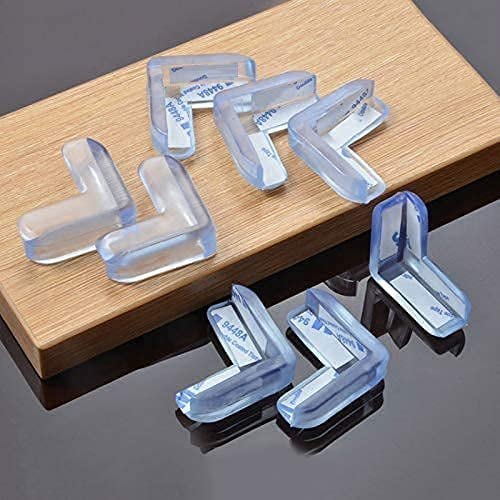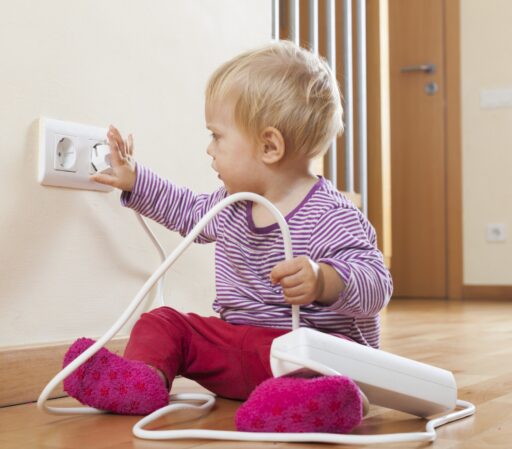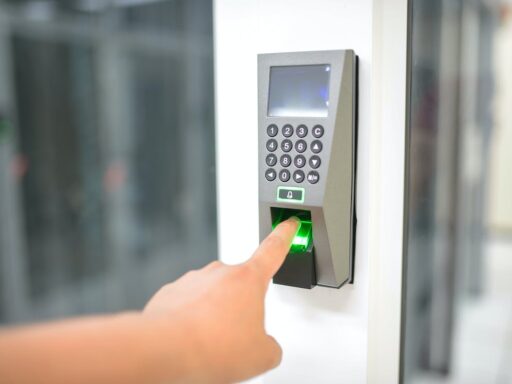A Comprehensive Guide to Childproofing Your Home.
Giving birth to a child is a wonderful experience, but it also means you need to make your home safer for them. Little explorers are naturally curious, and the normal things they do can sometimes get them hurt.
This complete guide will help you learn everything about childproofing your home to make it a safe place for your child to grow and thrive.
Understanding Childproofing
Childproofing (also known as baby proofing) is the process of creating a child-safe environment or object. Childproofing may entail restricting children to safe locations or keeping them from entering dangerous areas. The parent may do this on their own or with the assistance of a professional. Check out the video below to better understand how this process works.
Initiate your safety measures by focusing on the fundamental aspects within your home before progressing to more specialized areas. Establish a protective barrier against furniture toppling by constructing safety gates, limiting access to specific rooms or locations.
Ensure the installation of safety plugs over electrical outlets to prevent accidents. These foundational steps lay the groundwork for creating a significantly safer home environment. Furthermore, in addition to these essential precautions, you can also take measures to safeguard:
- Electricity Plugs

Before you dive into childproofing your home, take some time to make a thorough list of all the possible dangers lurking around. One critical area to focus on is the electric outlets that are conveniently at eye level for children – they can pose a significant risk. Mitigating this potential danger is quite doable by employing outlet covers and incorporating other straightforward measures. These simple steps go a long way in eliminating the risk, ensuring a secure environment where little hands are kept away from areas they shouldn’t be exploring.
By prioritizing these precautions, you create a home that not only fosters exploration but does so within safe and protected boundaries, guaranteeing the well-being of your curious little ones.
- Cabinet pulls and doors
Children’s innate curiosity often draws them to cabinet doors and drawers, enticing them to explore the myriad household items stored within. As these spaces hold an array of items that can captivate their interest, it becomes paramount to address potential risks. Implementing childproof locks on these storage areas emerges as a crucial step in enhancing safety.

This proactive measure establishes a protective barrier, effectively preventing access to potentially hazardous items and substances. By doing so, parents can facilitate a secure environment for their children to engage in play without the inadvertent risk of encountering harmful objects. This approach not only encourages exploration but also provides parents with peace of mind, assuring them that their child is less likely to accidentally come into contact with anything that may pose harm.
- Sharp points and edges
It’s essential to be mindful of another potential safety concern – furniture with sharp edges and points. These aspects can pose a risk, especially when children are engaged in play. To enhance safety, consider using corner guards or pillows to soften these edges, thereby reducing the likelihood of injuries during playtime. Moreover, an extra layer of precaution involves securing heavy furniture to the wall.

This measure prevents accidental tipping, ensuring added safety in shared or public areas. By incorporating these straightforward steps, you not only create a safer environment for kids but also promote worry-free play, allowing them to explore and enjoy their surroundings with minimized risks.
- Safety on the stairs
Securing the safety of homes with multiple levels requires thoughtful consideration, especially when it comes to staircases. A vital precaution involves the installation of safety bars at both the top and bottom of the stairs, establishing a robust physical barrier that curtails children’s exploration in ways that could potentially lead to falls. This proactive measure plays a pivotal role in mitigating the inherent risks associated with stairs.
Furthermore, maintaining a clutter-free staircase is equally crucial, significantly reducing the likelihood of tripping hazards. By implementing these comprehensive safety measures, parents create a secure environment where children can confidently navigate their surroundings. These deliberate steps not only minimize the potential for accidents but also provide parents with a heightened sense of assurance regarding their child’s well-being in a multi-level home setting.
- Safety for windows

Ensuring window safety is a crucial aspect of childproofing that is sometimes overlooked. Installing window guards is a key measure to prevent your child from falling while still allowing them to enjoy the view safely.
Additionally, it’s important to take precautions to prevent strangulation by keeping blind ropes securely in place and out of your child’s reach. These simple yet effective steps contribute significantly to creating a secure environment, allowing parents to have peace of mind while their child explores and experiences the world around them.
- The digital world
Last but not least, prioritizing the safety of electronic devices and managing screen time stands as a critical aspect of childproofing. Employing child-proof covers on outlets, securing heavier gadgets, and actively controlling your child’s access to screens are effective measures that significantly contribute to creating a secure online environment for their well-being.
Childproofing your house is a comprehensive approach to ensuring your child’s safety as they develop and explore. In addition to making your home safer, you also allow your child to learn, play, and develop without taking any additional risks by taking care of both obvious and concealed dangers.
Recall that your well-childproofed home is a secure environment for your growing child.








